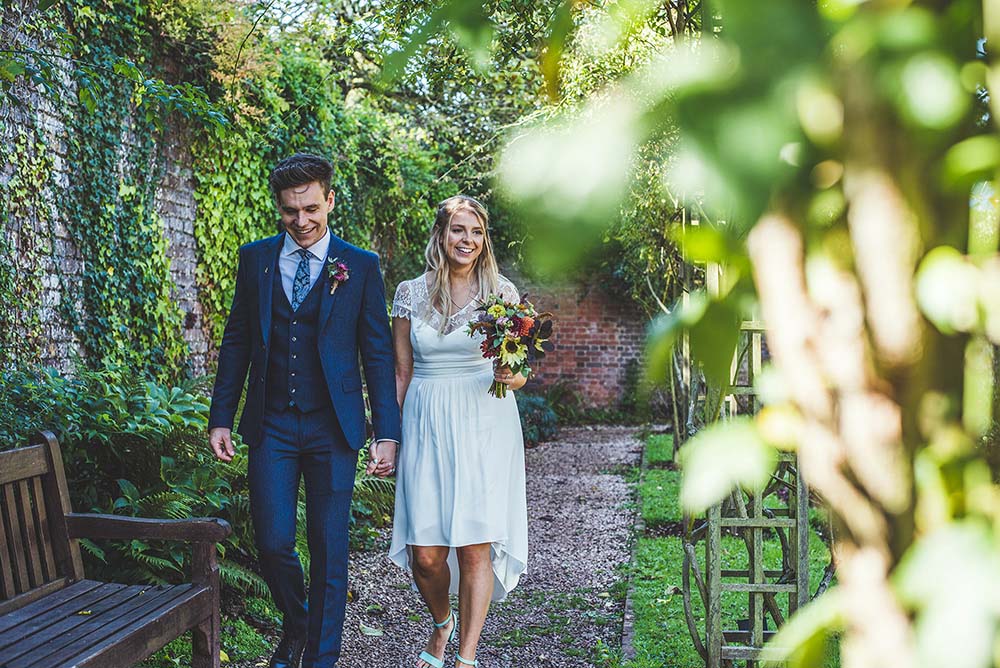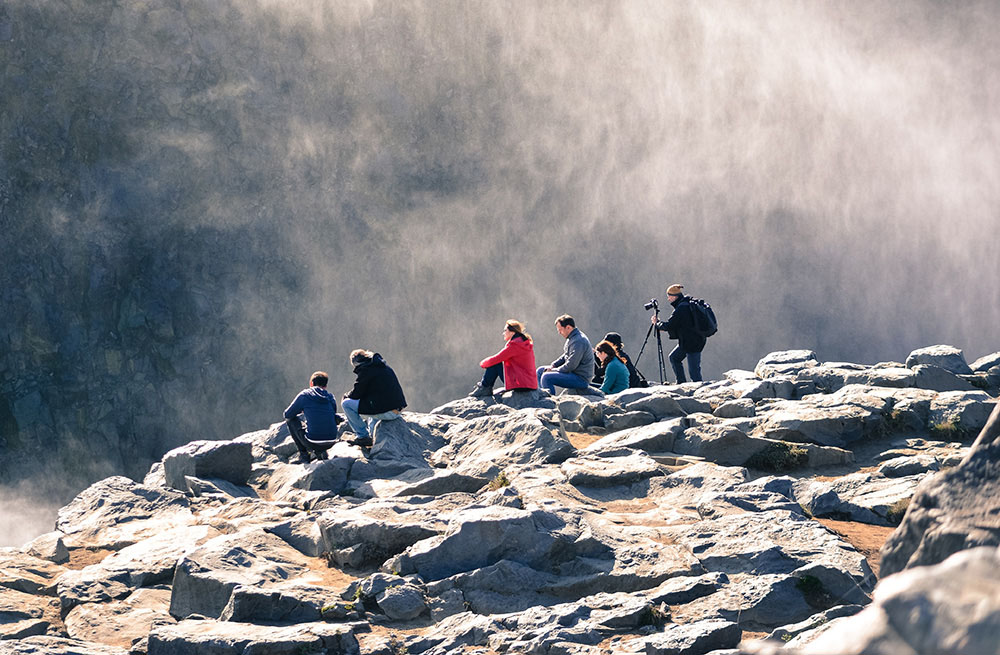There are many different ways to make money from photography (and hopefully bring in the big bucks too!), from selling your images online to taking images for clients. In this feature we’ve outlined a few of them so you can get a better idea of what is available to you.
Despite there being a lot of competition, and nearly everyone owning some sort of camera (even if it’s just a mobile phone), there is still an enormous market for photographers. We live in a world where engaging imagery is important and there is always demand for it. Remember as well that you don’t have to stick to just one thing. Many photographers have multiple avenues in their business as they want to maximize their profits as much as possible.
Welcome to the AP Improve Your Photography Series – in partnership with MPB – This series is designed to take you from the beginnings of photography, introduce different shooting skills and styles, and teach you how to grow as a photographer, so you can enjoy producing amazing photography (and video), to take you to the next level, whether that’s making money or simply mastering your art form.

There are over 40 articles in this series, so make sure to come back to continue your journey, and have fun along the way, creating great images. If you’ve found these articles helpful, don’t forget to share them with people you know who may be interested in learning new photography skills. You’ll find a whole range of further articles in this series.

There are many different ways to make money from your photography. Photo credit: Claire Gillo.
Commercial photography
One of the biggest sectors in the photography industry is the commercial sector. Nearly almost every business out there that exists needs a photographer to capture their brand and shoot their product/s.
Commercial photography covers all sorts from taking images and headshots of business owners and premises to product photography that is used to sell products or used in advertising. Although some businesses use stock imagery (another way to make some money see below), there are many businesses out there that need and will pay for bespoke imagery to showcase their product/s in the best light possible.
With commercial photography there is money to be made. A day rate for a commercial photographer starts around £200. However, on average £300 – £400 can easily be brought in by those with a good reputation. £1000 + is not unheard of for commercial photographers at the top of their game or with bigger overheads (i.e. studio photographers). To bring in this amount of money you need to have a very good reputation though.

Commercial photography covers lots of different genres but its main purpose is to help sell a product or business. These images were shot for Incy who make kids arts and crafts. Photo credit: Claire Gillo.
Wedding photography
If you are a people person and you enjoy capturing the moment then wedding photography could be an excellent way to make money. For wedding photography it is first vital that you are able to think fast on your feet and have a creative eye for capturing detail. You also want to stand out from your competition as there are a lot of wedding photographers out there. A signature style or unique selling point is key.
Wedding photographers can make a good income with the average salary starting around £35,000 in the UK. Most wedding photographers charge £1500 upwards to shoot a single wedding. Some high-end wedding photographers can make up to £5000 per wedding.
If you don’t yet have the confidence to shoot a wedding but like the sound of this industry, consider looking at second shooter opportunities. Many wedding photographers employ a second shooter on a freelance basis to cover bigger jobs. You may be tempted to do it for free to get the experience, but we recommend you ask for a wage to cover your time. Most second shooters would expect to get paid around £150 – £200 per job depending on how long they need you for.

Capturing the moment and people’s special day is an excellent way to make a living. Photo credit: Claire Gillo.
Event photography
Events come in all sorts from corporate, birthday parties, to music events. In event photography, like in the wedding industry, key skills include being quick on your feet and being able to shoot under pressure. After all there is no take two!
Generally, event photography tends to have a smaller budget allocated to it than wedding photography. This is especially true for music events, where budgets are almost nonexistent. However, that’s not to say you can’t make a living from it. Many do. You just have to find your unique style and approach to the subject so people will pay for your skills.

Photographing events means you need to be quick on your feet and in the right spot at the right time. Tim Burgess pictured here headlining at Sea Change festival. Photo credit: Claire Gillo.
Lifestyle photography
Again, if you enjoy working with people and have a friendly and approachable manner then the lifestyle genre that covers family, kids to newborn portrait photography is a great way to make a living.
For this style of photography, you may want to invest in some studio lights and backdrops although many lifestyle photographers prefer to shoot on location using just natural light so you’ll need to work out your style.
Newborn photography is a skilled artform and requires you to be able to safely handle newborn babies. For those interested in this genre but with no experience we recommend you shadowing an experienced photographer or enrolling on a course before you begin.

From capturing families, children to newborn, lifestyle photography has plenty of opportunities. Photo credit: Claire Gillo.
Stock photography
Once you have a batch of decent images in your portfolio you may want to consider going down the stock route. Selling your images through a stock website is a great way to bring in some additional income. It’s important to note that whilst there are a few photographers who solely make their income through stock photography, for the majority it’s more of a top up as there is a lot of competition and is ever increasing.
There are many different stock websites out there. Some are massive giants in the field, for example Getty, whereas others are lesser known however this could work to your advantage. Decide if you want to be a small fish in a big pond or a big fish in a small pond.
Here are a few of the more popular stock websites.
iStock is worth highlighting, as they are owned by Getty, however the biggest difference between the two is that iStock is not exclusive. That means you can sell your work on iStock as well as through other agencies. It’s worth checking this detail when signing up to stock photography websites.
Wherever you end up selling your images ensure you have thoroughly read through the providers terms and conditions before you commit.

When taking images for stock websites think about what images will sell and what businesses are going to use them. Photo credit: Felix Rostig.
Online shop
If you have an artistic approach to the photographic medium, then an online shop might be the right path for you. Over the past few decades, photography has become an increasingly popular artform and consumers sought after artistic and abstract images to hang on their walls.
There are many different platforms out there to sell from with a few of the more popular ones listed here:
When it comes to selling from a big platform although you have a much larger target audience you also have a lot more competition – again small fish in a big pond situation. When it comes to standing out from the pack, think of ways you can make your work look unique as your presentation is key.
Finally take into account that wherever you sell from you’ll have to pay a fee. Again, do your research first before you commit to ensure you are happy with the deal. For example, on Etsy it costs £0.18 to publish a listing (a listing lasts for four months or until the item is sold) and once an item is sold, there is a 6.5% transaction fee on the sale price (including the delivery price).

Selling your photography on a platform like Etsy is an excellent way to reach a large target audience although you do have a lot of competition. Screenshot from Etsy.
Selling through your own website
If you want to maximize your profits, then you can sell your own artwork and images from your own website. Obviously, the biggest disadvantage in doing this is you don’t have a large audience however if you are clever you can think of ways to market your products and to spread the word. If your computer skills are basic, you will need additional help to set up your online shop as well, which will be an initial cost.

Selling your own work through your own website means you take all of the profits. Photo credit: Lauren Mancke.
Teach photography
Finally, for those who feel the urge to impart their photographic wisdom onto others, teaching photography can be a rewarding way to make your money. To be a great teacher you’ll need to be good with people and also not afraid to share all of your expert secrets.
There are many different ways to teach photography from going down the formal education route (although you will need the right qualifications to do this) to running workshops of your own (no qualifications needed but you do need a good reputation).
Running workshops can be done by many different types of photographers from those who teach lighting and portraiture setups to those providing clients with once in a lifetime experience – such as photographing the northern lights.

Teaching others can be a rewarding career for some. Photo credit: Koushik Chowdavarapu on Unsplash.
Further reading:
45 ways to make money from photography
Beginners guide to how to photograph events and music
There won’t be another article in this series next week, as this is the final article in the series of the AP Improve Your Photography Series – in partnership with MPB. However, you can find all the articles in this series listed below, so don’t forget to brush up on your skills with these guides:
- Part 1: Beginners guide to different camera types.
- Part 2: Beginners guide to different lens types.
- Part 3: Beginners guide to using a camera taking photos.
- Part 4: Beginners guide to Exposure, aperture, shutter, ISO, and metering.
- Part 5: Understanding white balance settings and colour
- Part 6: 10 essential cameras accessories for beginners
- Part 7: Beginners guide to the Art of photography and composition
- Part 8: Beginners guide to Photoshop Elements and editing photos
- Part 9: Beginners guide to Portrait Photography
- Part 10: Beginners guide to Macro Photography
- Part 11: Beginners guide to Street Photography
- Part 12: Beginners guide to Landscape Photography
- Part 13: How to shoot Action and Sports Photography
- Part 14: How to shoot wildlife photography
- Part 15: Raw vs JPEG – Pros and cons
- Part 16: How to create stunning black and white images
- Part 17: How to photograph events and music
- Part 18: Pet photography – how to photograph pets
- Part 19: The ultimate guide to flash photography
- Part 20: The ultimate guide to tripods
- Part 21: Create awesome photos with light painting
- Part 22: Beginners guide to file and photo management
- Part 23: How to shoot food photography
- Part 24: Complete guide to outdoor light
- Part 25: Top tips for stunning car photography
- Part 26: How to master waterfall photography
- Part 27: How to use social media as a photographer
- Part 28: How to get started in film photography
- Part 29: How to connect your camera to your phone
- Part 30: How to make a great video recording with your camera
- Part 31: Why you should join an online community
- Part 32: Find the best online website to share and sell your photos
- Part 33: How to photograph weddings – our guide to wedding photography
- Part 34: How to find joy and inspiration in photography
- Part 35: How to shoot like a fashion photographer
- Part 36: How to shoot in low-light
- Part 37: How to photograph jewellery and other small items
- Part 38: Fine art photography and how to do it
- Part 39: How to find your own style
- Part 40: How to protect your copyright
- Part 41: How to make money from photography
Find all the Improve Your Photography articles here.







